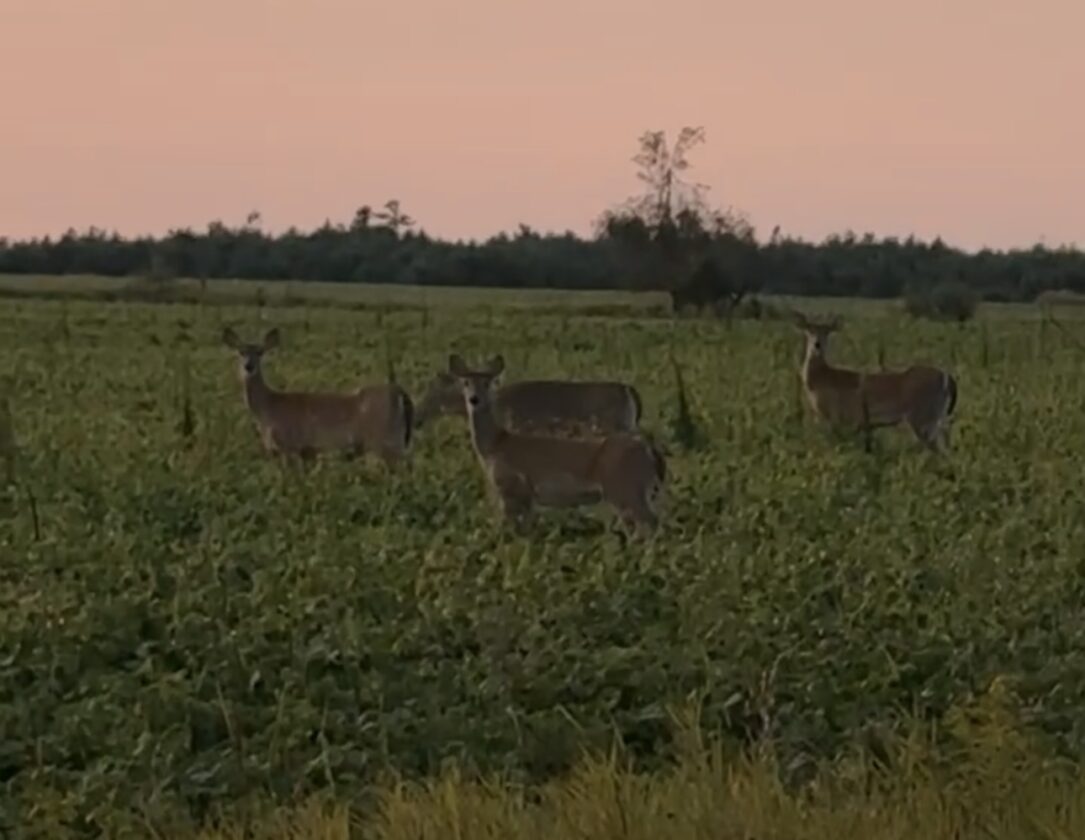DNR confirms EHD disease in some Michigan deer

News Photo by Kayla Wikaryasz Deer are seen standing in a field as the sun sets in Posen.
ALPENA — The Michigan Department of Natural Resources (DNR) has confirmed the first cases of epizootic hemorrhagic disease (EHD) of 2025 in Southeastern Michigan.
According to a DNR press release, the DNR Wildlife Health Section, Michigan State University Veterinary Diagnostic Laboratory, and the Southeastern Cooperative Wildlife Disease Study confirmed EHD cases in free-ranging white-tailed deer in Eaton, Jackson, Van Buren and Washtenaw counties.
Deer, Elk, and Moose Management Specialist Brent Rudolph told The News that the 2022 EHD outbreak in Montmorency County is the farthest north case of EHD that the DNR has confirmed since they began monitoring the virus.
According to the DNR, the EHD is a viral, sometimes fatal, disease that periodically affects white-tailed deer in Michigan. It is transmitted through the bite of an infected midge, or biting fly. The DNR clarified that there is no evidence that humans, household pets, or other Michigan wildlife can contract the EHD virus.
The release also states that venison harvested in areas affected by EHD is safe for consumption. However, the DNR does not recommend consuming the meat of any animals that appeared visibly sick, but healthy deer harvested from areas where EHD has been present are still safe to eat.
Rudolph also noted that deer cannot transmit the disease directly to one another because the virus must pass through the insect.
“In past years when we’ve confirmed EHD, it has typically affected only one or a few counties,” Rudolph said in the release. “Occasionally, localized outbreaks have been detected in a dozen or more counties, including as many as thirty in 2012.”
According to Rudolf, EHD typically affects deer in late summer and early fall. He explained that midges breed well when there has been a wet spring and dry summer. He said that midges tend to breed around muddy areas where river levels have receded.
According to the DNR, visible symptoms of EHD in deer include appearing lethargic, disoriented, lame or unresponsive. Deer infected with EHD may show bloody discharge from the nose and mouth, a swollen or blue-tinged tongue, and swelling of the eyelids and around the neck or head.
The DNR states that the EHD can only be confirmed through testing, and once EHD is confirmed in a county, it is not necessary to continue testing for the virus. However, the DNR encourages the public to continue reporting suspected cases online to track the full extent of an outbreak.
Rudolph told The News that EHD outbreaks tend to be localized and do not have long-term affect on deer populations, though it can be alarming for a community.
He added that the likelihood of frequent outbreaks in Northeast Michigan in the future is low, though the DNR can not provide definitions.
“We don’t want to provide too many assurances,” Rudolph said. “It is less likely to frequently happen.”
Rudoph explained that deer can weather EHD and can build immunity to the disease.
“Deer that survive epizootic hemorrhagic disease develop immunity to the virus, and outbreaks are rarely seen in the same area in consecutive years,” he said.
However, he said that the public should still report sick deer to the DNR as it allows them to have a larger scope of the health of deer across Michigan.
“It is a good way to communicate with our team,” Rudolph said. “It keeps eyes out on the field.”
Michigan residents can report sick deer at michigan.gov/dnr/managing-resources/wildlife/wildlife-disease.
Kayla Wikaryasz can be reached at 989-358-5688 or kwikaryasz@TheAlpenaNews.com.



